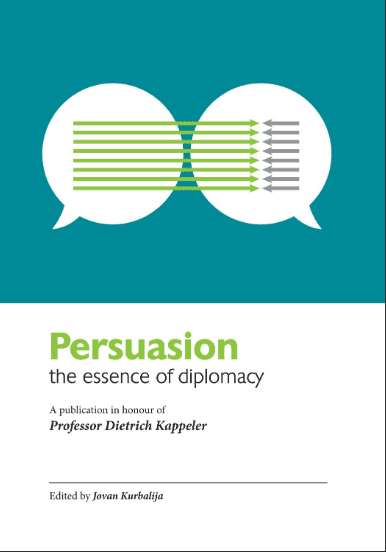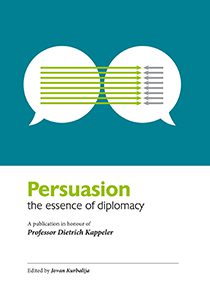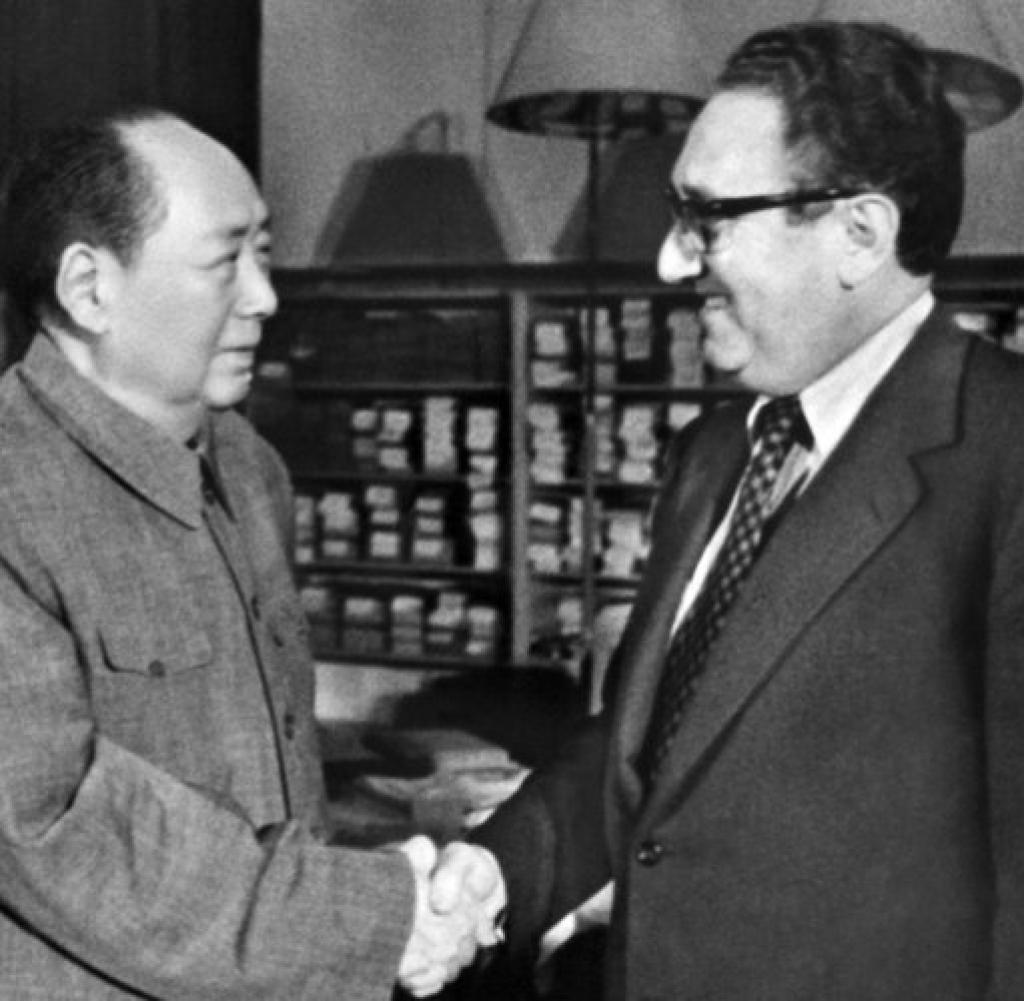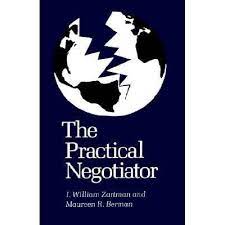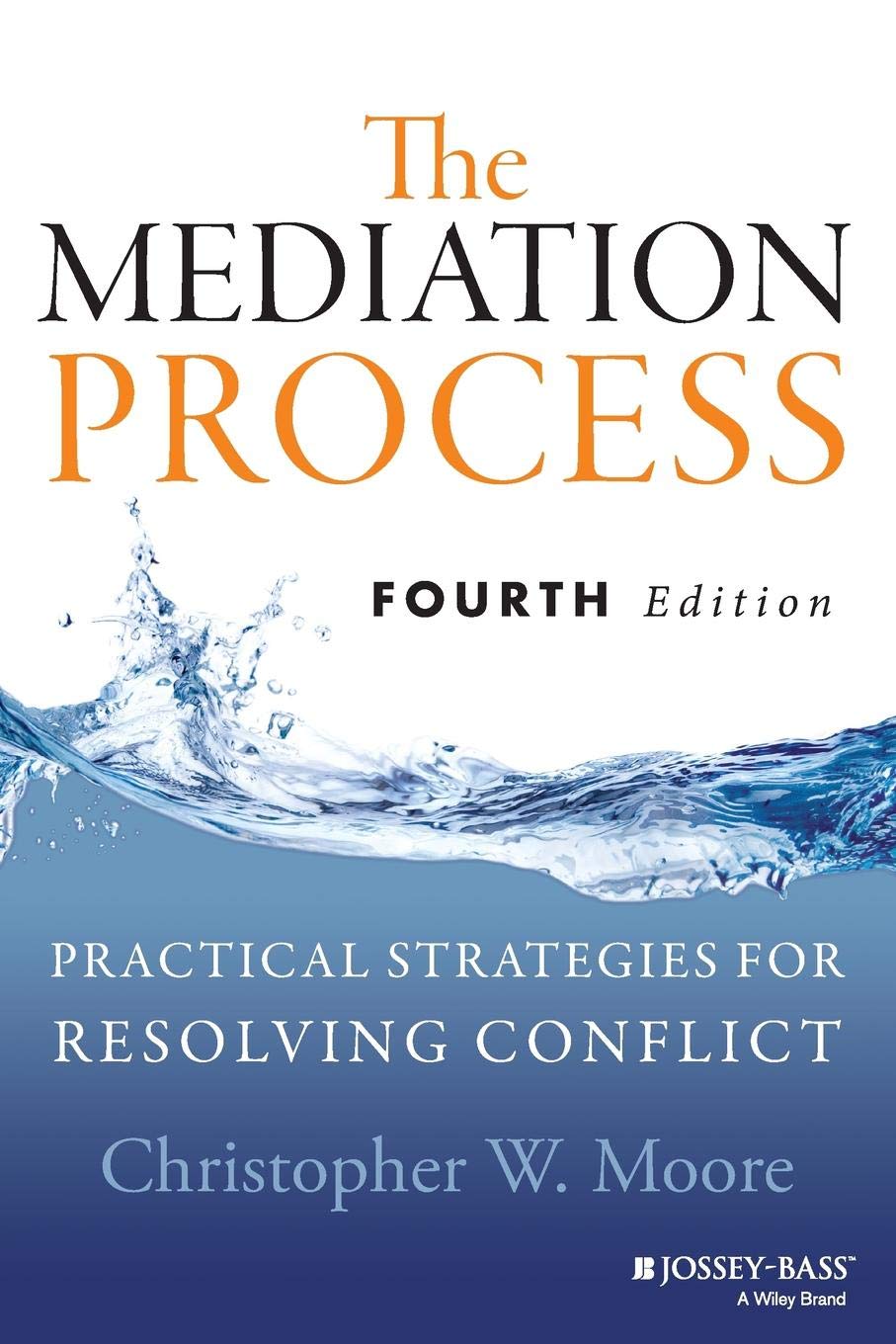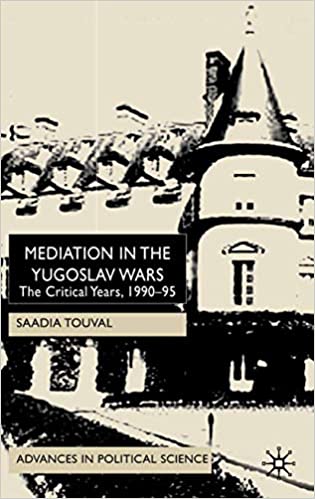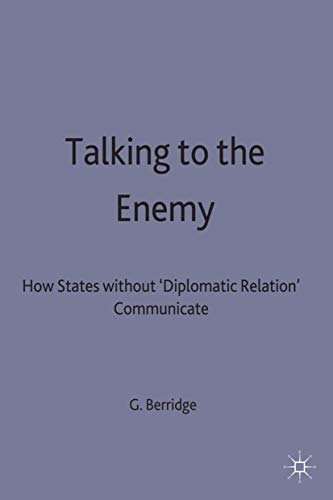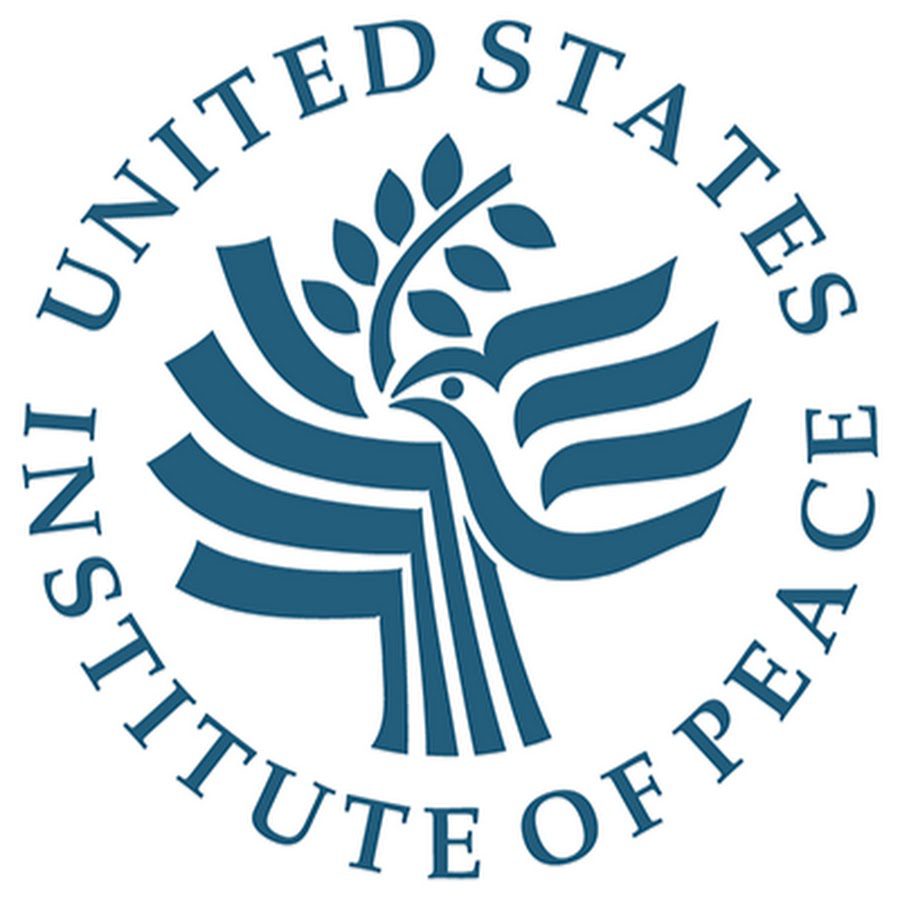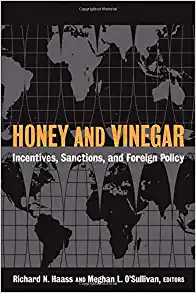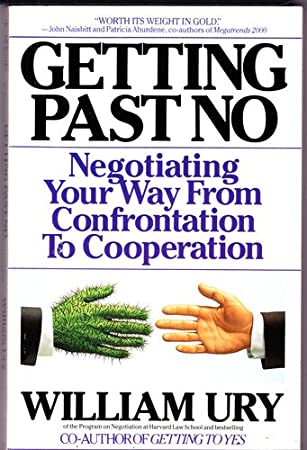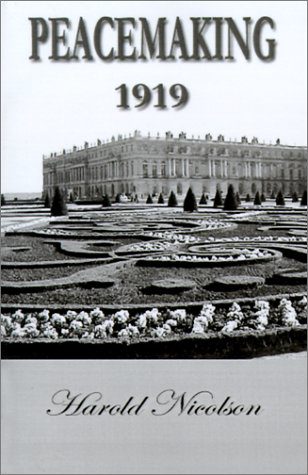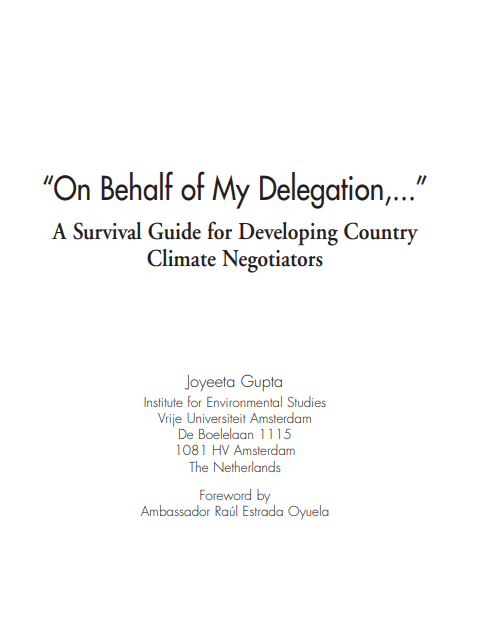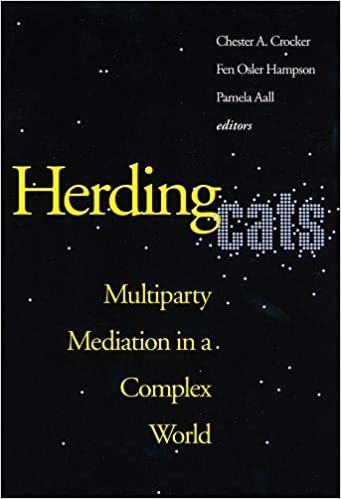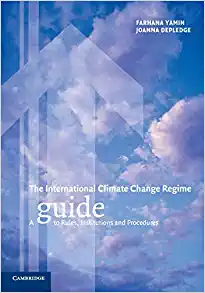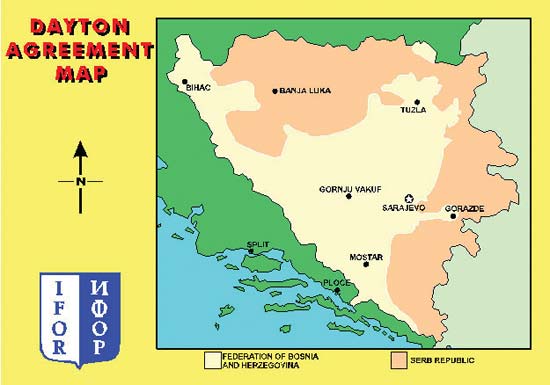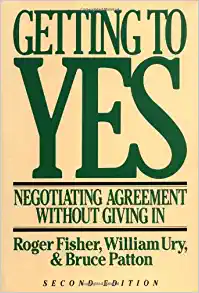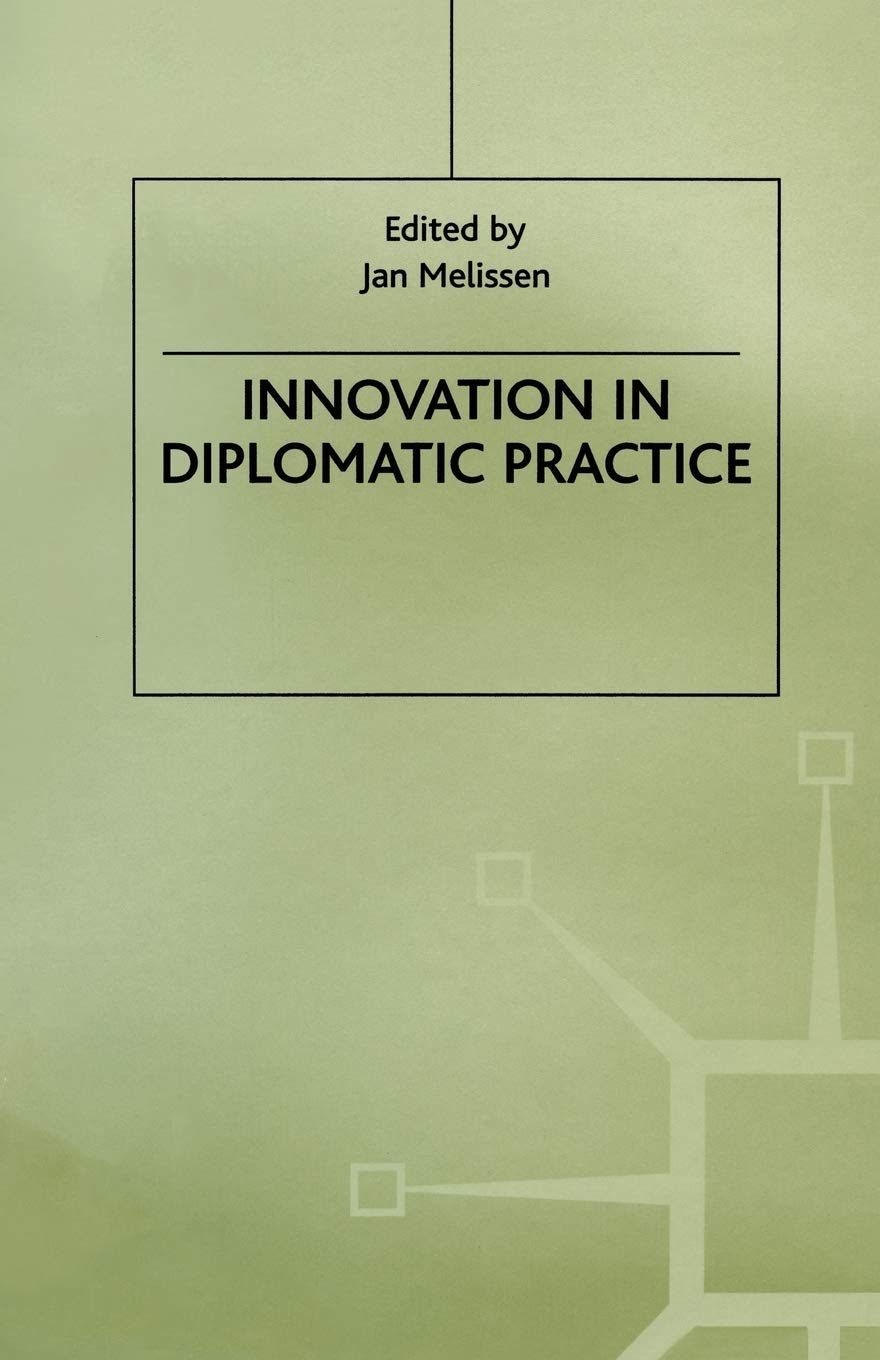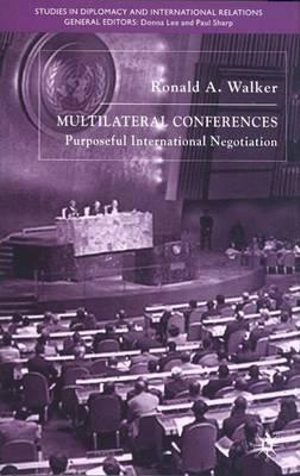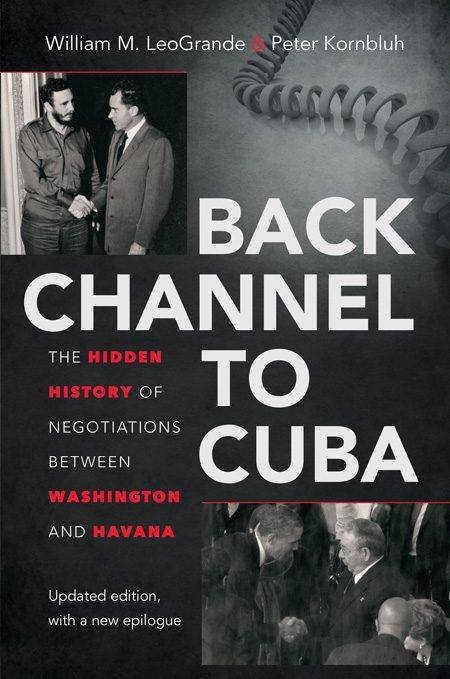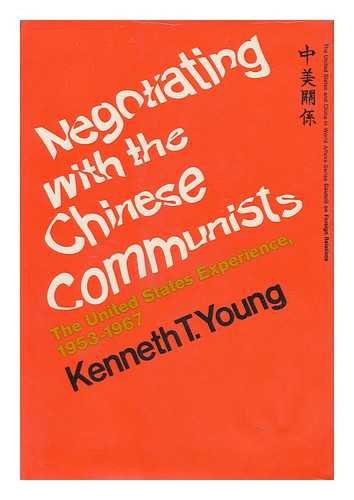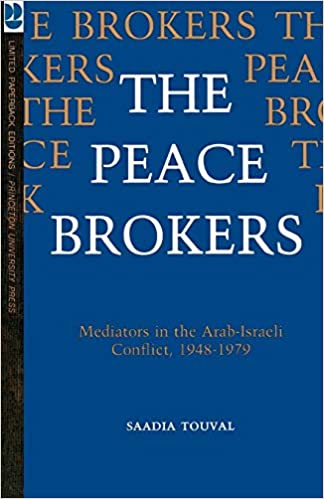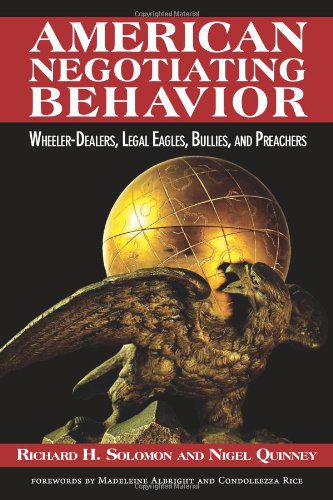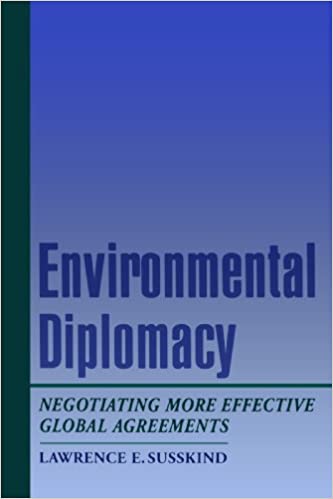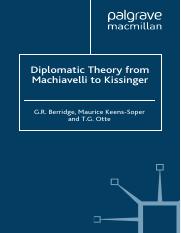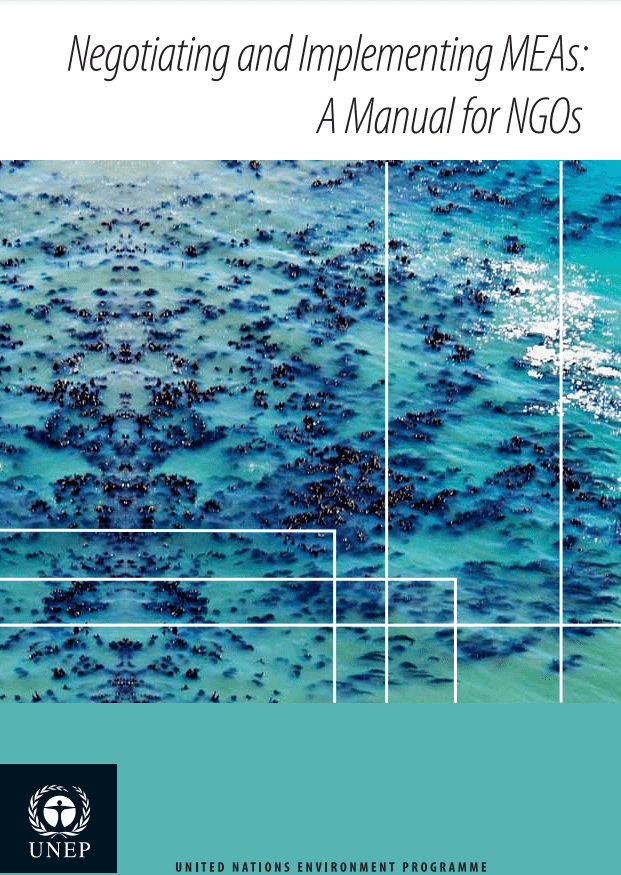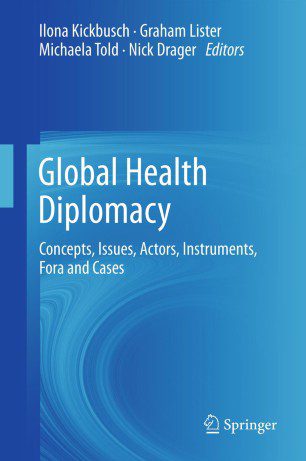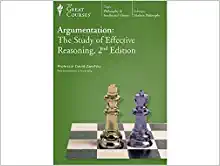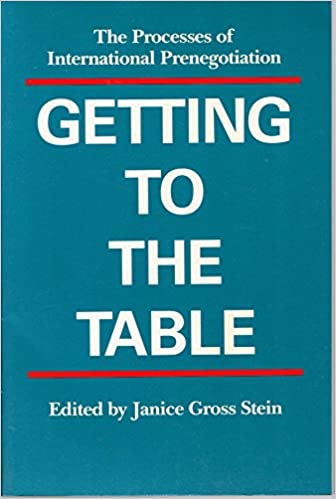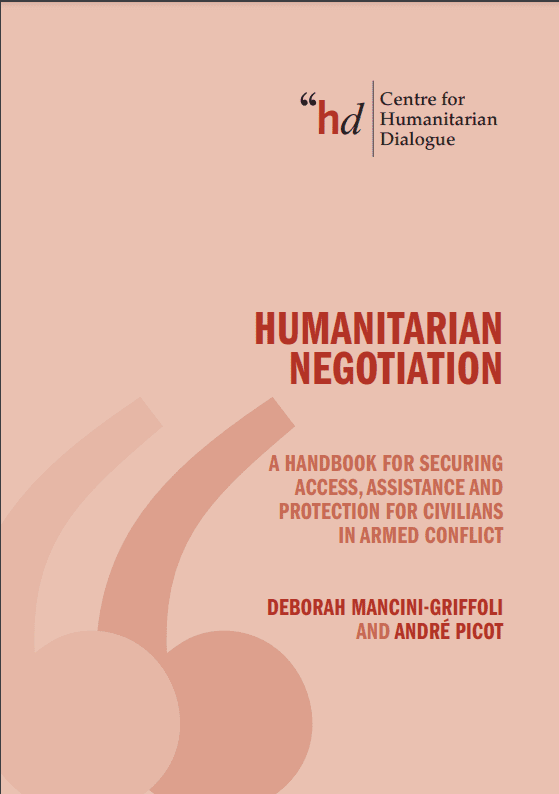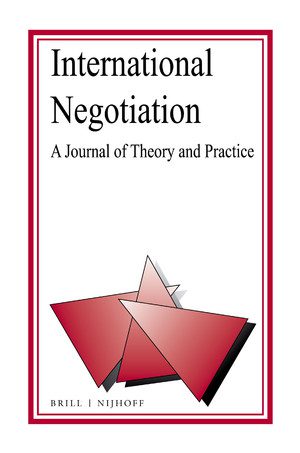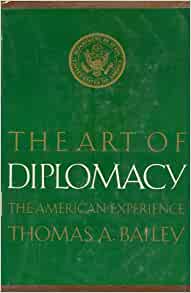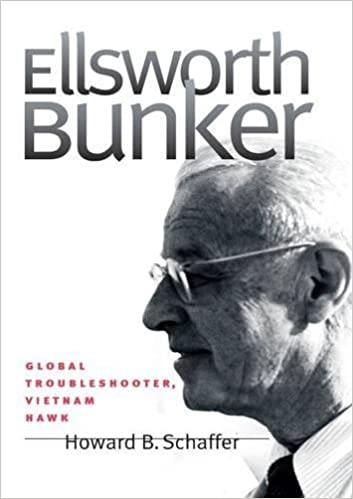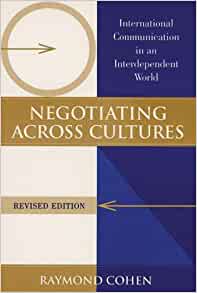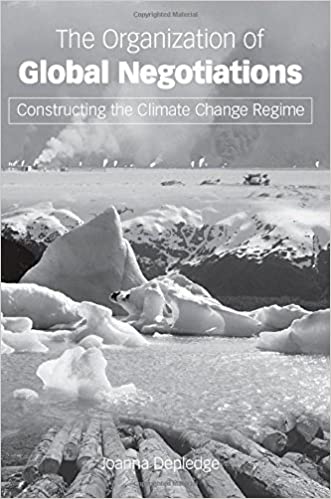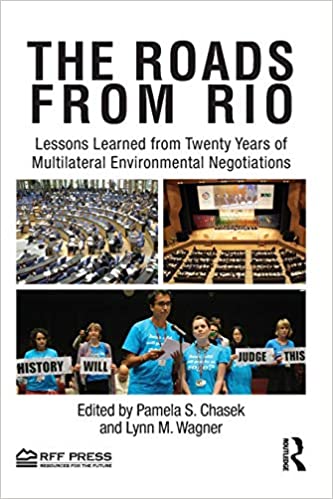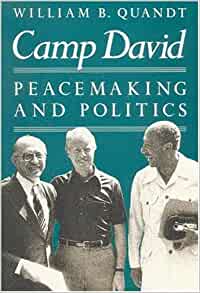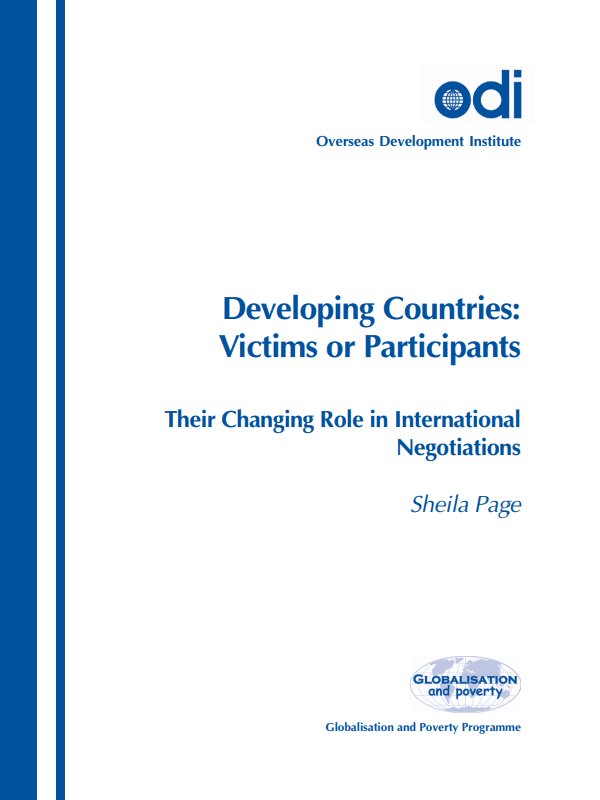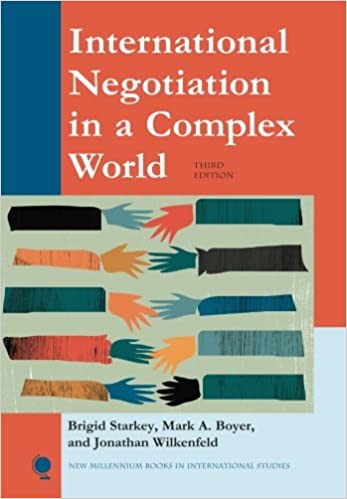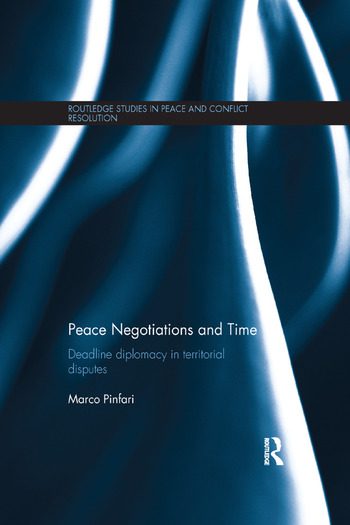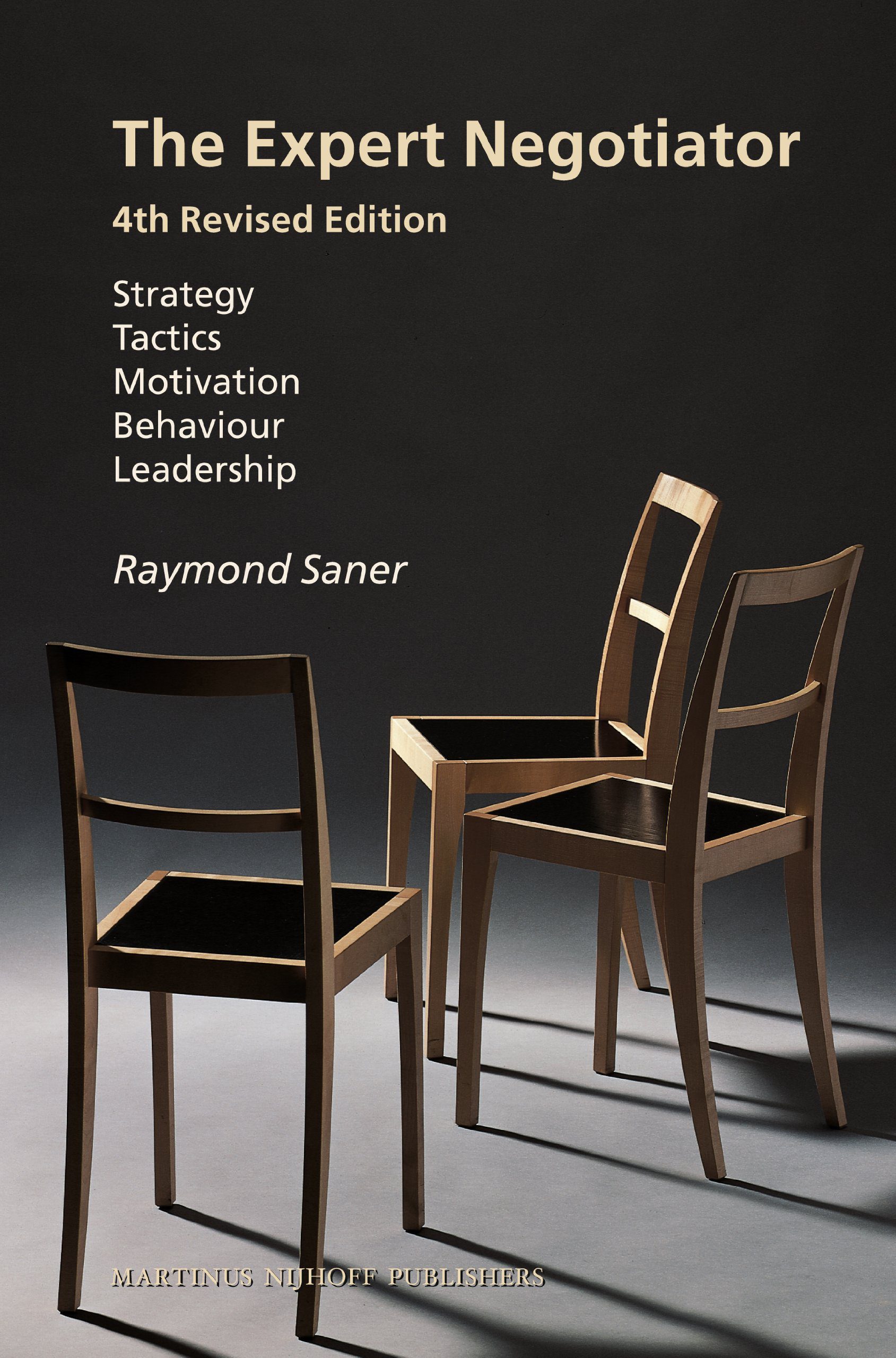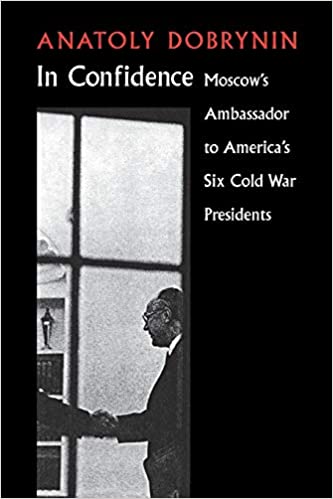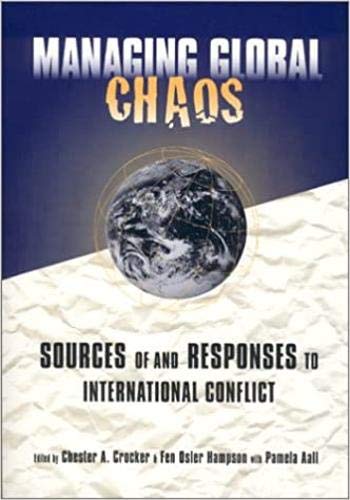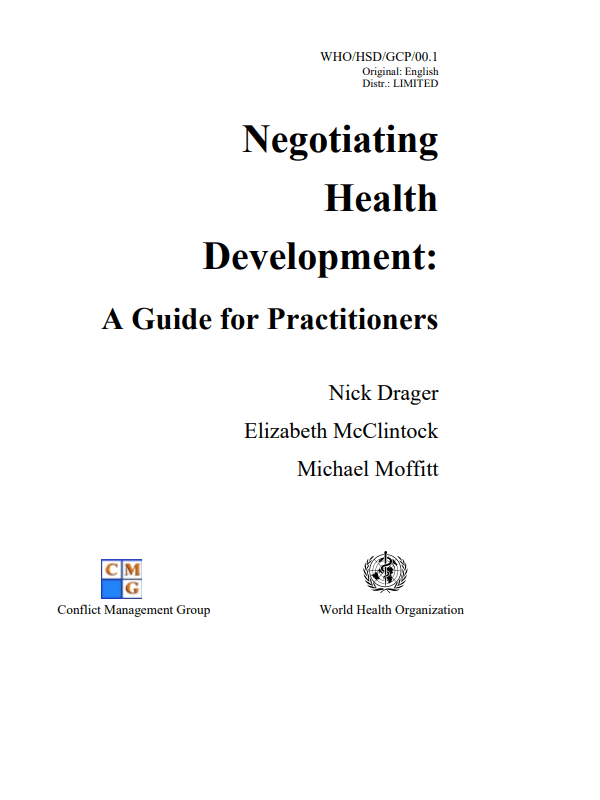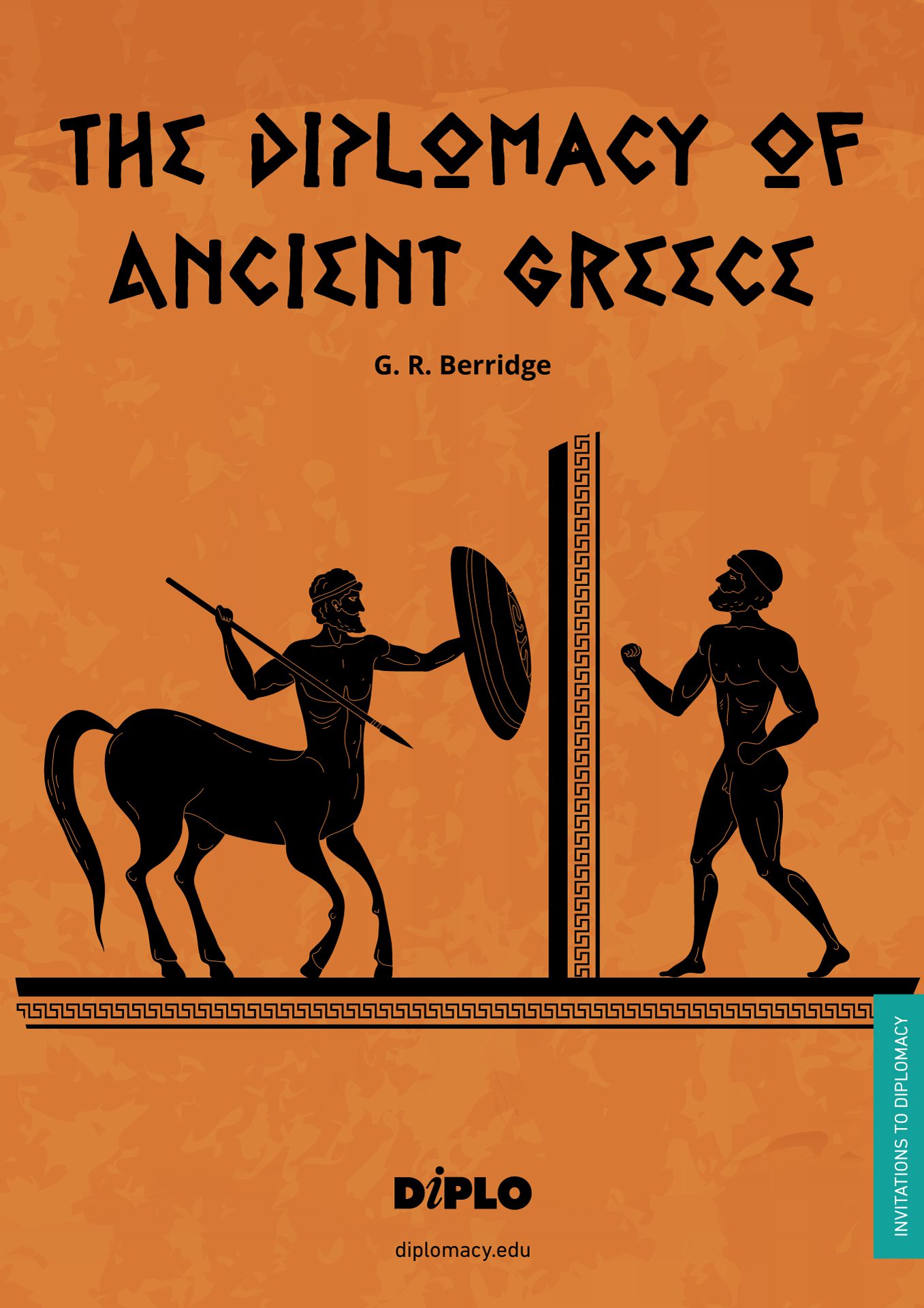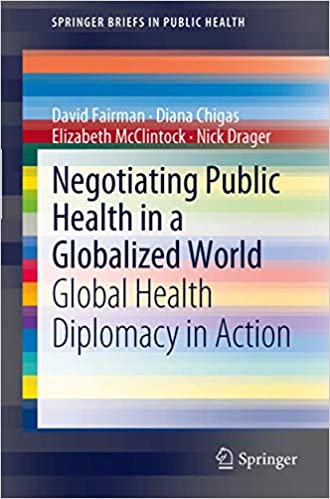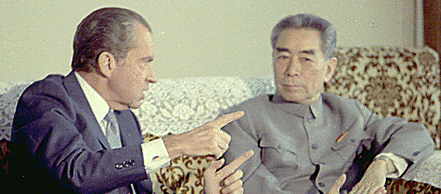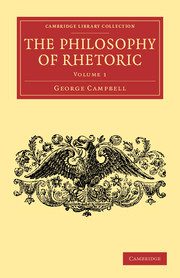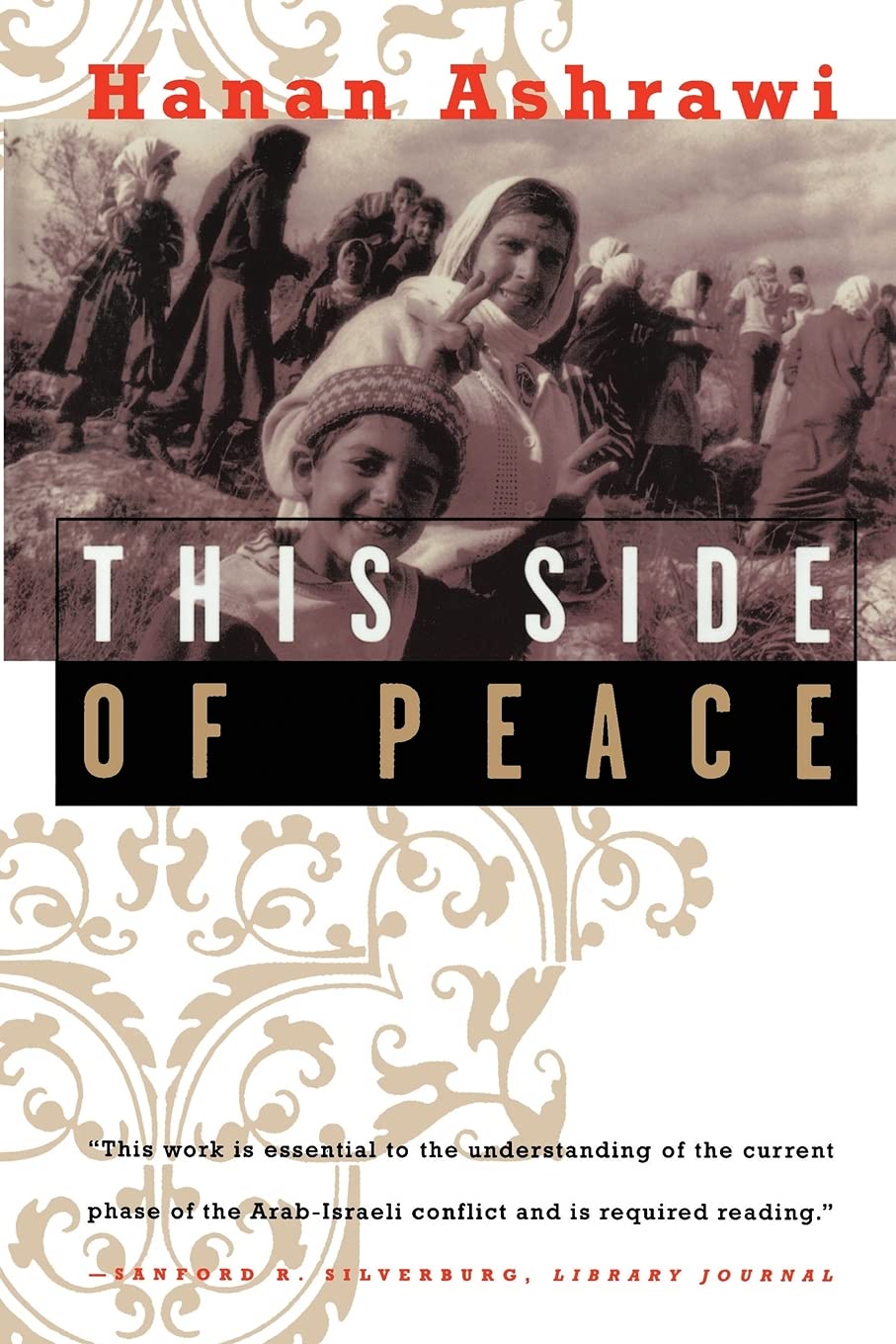Negotiators will best persuade their counterparts if they can be in direct contact with them, if possible face-to-face. This does not mean that persuasion through indirect channels would not be possible … it is. For example through written messages, other negotiators, perhaps members of the delegation of the one who should be persuaded to change their opinion and course. In some cases such indirect influence might be more effective than direct ‘confrontation’. For example because the relationship between the negotiators is not good and therefore a person friendly to the target of persuasion might be more successful. Or perhaps the one who wants to convince the other is of lower rank – or much younger – and culturally speaking it would not be done to address the higher ranking diplomat in a direct way without an intermediary.
There are many reasons why indirect approaches could be more successful than direct interaction, but these are situational exceptions to the rule that direct contact is preferable. In some cases the direct channel of persuasion has been deliberately put out of order; for example in the Congress of Vienna after the Fall of Napoleon. The Great Powers did not want to be persuaded by the middle and the minor monarchs, as this would distract them too much from their own interaction within the ‘pentacracy’: Russia, Austria, Prussia, Great Britain, and France. They were willing to listen to the others on an ad-hoc basis; they did not want them within their Inner Circle: the decision-making process of the conference.
Interstate negotiation processes
The nineteenth century witnessed a multitude of interstate negotiation processes, the most outstanding being the Vienna Congress of 1814–1815. All concerned parties were invited to the Congress, be they the former victims or the former allies of Napoleon. There were two reasons for inviting all relevant countries – big or small – to participate: for a legitimate conference and therefore a legitimate Final Act, all stakeholders had to be present. And if one country could be left out, why not another? Even for the Great Powers, this would be a dangerous precedent.
What would be the criteria for excluding a country from the Congress as a whole? This would be a political decision to be negotiated and there wasn’t a way to do that. To exclude those who had been in the camp of the enemy could not be a criterion as – apart from Britain – all stakeholders had been with Napoleon at a certain time. The duration of that connection wasn’t a criterion either, though in the political process of the Congress, it did work to the detriment of some countries like Denmark and Saxony. What could be done, however, was to create inclusiveness and exclusiveness inside the Congress itself: some were allowed to be decision-makers; most were kept at bay. There wasn’t a procedure and a principle for this either, it was just decided by the Great Powers and the others had no choice but to allow for this.
The dilemma of inclusiveness and exclusiveness and its consequences for persuasion through negotiation
Negotiation can be seen as a choice of partners. In general, negotiation is defined on the basis of its content. What are the positions of the contending parties and how far apart are they, and therefore how difficult will the negotiation process be. However, we can also define negotiation on the basis of the participating actors, in the case of diplomatic negotiations: the countries and their representatives, their agents. From such a perspective it as much the contending counterparts around the table, as the distance between their interests that will determine the flow of the process, the options for convergence, and closure by means of an agreement. Leaving a party outside of the process could have grave consequences for the value and viability of the treaty; taking the party in could be obstructing the process too much, thereby never being able to close the negotiation process. But the choice of parties also is a choice of opportunities for persuasion. Not being able to influence the counterparts in a direct way, a party will be forced to do this indirectly, which is – in most cases – less effective than a direct negotiation process.
Power politics
The main criteria for co-opting a party into the day-to-day negotiation process of the Congress of Vienna were two-fold: did the party belong to the anti-Napoleonic alliance and was it so powerful that a peace treaty could only be implemented if that power participated fully in the central negotiation process? This principle implied that Russia, Austria, Prussia, and Great-Britain would be included, but France would not. For power political reasons, France was allowed into the Inner Circle shortly after the bargaining process got underway, as at least three out of four Great Powers saw the benefit of it, skillfully clarified by the French plenipotentiary. Power politics dominated and the mistake of the Paris Peace Conference of 1919 – to keep two of the main powers outside the Inner Circle because it had been the enemy (Germany) or was seen as a potential enemy (Soviet Union) – wasn’t made in ‘Vienna’. After-all, the French participation did not obstruct the negotiation process and the question ‘what to do with France’ did not dominate the proceedings. On the contrary, to have an uneven number of actors on board proved to be vital for avoiding durable stalemates.
The pentacracy
For the implementation of negotiated outcomes it is vital to have as many relevant parties as possible in support of the final agreement. However, a successful negotiation process with more than five parties seems to be a very difficult one. Complexity hampers effective negotiation; the number of parties matters. One could postulate that the greater the number of parties, the richer the process, therefore the more choices available, the more opportunities, the more integrative the final outcome. This is certainly true, but to manage a very complex multilateral process is often a burden. Especially if, as in the nineteenth century, rules and regulations were absent. The Congress of Vienna, for example, never decided on uniform procedures and, without such protection of the bargaining process, it is very difficult to move the parties in the desired direction.
It was only in the twentieth century that we started to manage multilateral negotiations through rules embedded within international organisations. Even then we bounced at the boundaries of negotiation. It is perhaps no coincidence that it is the United Nations Security Council where the main decisions are taken and within that Council five countries play a decisive role. A pentacracy of the victors of the Second World War indeed … but still. We saw this in 1919 in the Paris Conference, where five countries formed the nucleus of the conference, although only three of them really played a decisive role. In 1814-1815 at the Vienna Conference we had Austria, Russia, Prussia, Britain, and France taking the lead, effectively excluding the other countries from real participation.
A balance needed to secure the peace
Exclusion of France at the beginning of the process wasn’t in the long-term interests of – foremost – Austria and Britain. Austria needed a counter-balance against its greatest competitor, Prussia. Britain needed to keep both Austria and Prussia in check, and therefore France had to become an integral part of the deliberations. Another reason for integrating the French enemy had to do with the unreliability of Russia on the one hand, and the need to control the Bonapartists and Republicans in France itself on the other. It was self-evident that only inclusion of the French could provide a balance of power in Europe, a balance needed to secure the peace wished for by the monarchies.
Exclusion of a major power from the negotiation process, like Germany and the Soviet Union in 1919, would have had disastrous consequences, especially as other major powers like Spain and Poland had lost their former strength or vanished completely. Excluding the minor powers was in the interests of the negotiation process and the need to reach an agreement within a certain time. The Vienna Final Act was signed nine days before Napoleon Bonaparte escaped from Elba, but the powers were not aware of this threat. This escape, on the other hand, would have been instrumental in forcing the allies to reach closure had their business not yet been done. External threats forge internal agreement, but in the Vienna case such a push wasn’t necessary. The process itself managed to converge into closure. Napoleon’s action did, however, provoke the exclusion of France from the negotiations of the Second Treaty of Paris in 1815, taking it back from its 1792 borders to those of 1790. France did not even get a change to persuade the other powers through negotiation, as they were excluded from it.
Exclusion from real participation should not be confused with lack of influence
Excluding other powers from real participation did not mean, however, that they had no influence at all. Hundreds of their representatives – and their mistresses – were gathered at Vienna as well and this closeness to the actual process gave them some kind of leeway. However, they were dependent on the benevolence of the main negotiating parties; they sometimes literally had to beg for attention. In order to keep them busy, an enormous circus of events was set up. These festivities were far more lavish then the ones we know of in earlier Congresses like Westphalia and Utrecht, or the conferences that came after them.
While the costly social events kept the minor powers at bay, they also provided them with opportunities to lobby the negotiators of the five powers central to the process. These powers could afford to keep the middle and smaller powers at a distance, as long as they could be sure that they could control them afterwards. The decisions at Vienna would not be of value if the five powers themselves would not stick to them, or if the secondary powers could not be forced to obey them. In order to keep the excluded powers in check, a two-tier system was of help. One group of excluded parties was given a more or less permanent position as consulted constituencies. Although they were not allowed into the Inner Circle, they were in part included on an intermittent basis. Countries like Bavaria, Württemberg, Saxony, Spain, Portugal, Naples, and the Netherlands had to go along in order to be able to keep the real small powers – for example, the small states in Germany and Italy in check.
Involved parties
This system of trickling down of power on the basis of inclusiveness and exclusiveness could therefore only be effective if there was a layer of middle powers who were both included and excluded. Included because they were regularly consulted, excluded because they did not have a ‘permanent seat’ in the negotiation process. We could label them as ‘involved parties’. As the middle class in a society provides for stability in the social and economic sense, these countries provided sustainability needed for the nineteenth century to be reasonably peaceful. However, one condition for the success of the Vienna framework had been the willingness of the major powers to be ‘in concert’. As in the European Union of today, smaller countries were needed to cement the relationship between Germany, France, and Britain. But if these three could not agree among themselves, the Union would not be able to make any progress. At the same time some dissent between the main powers was needed to give the auxiliary states the opportunity to influence their behaviour, and thereby the course of the Union.
Another condition was the absence of a major threat from the outside. As the United States was not yet a world player, as China and Turkey were in decline, and as Russia was included in the process, the centre – being Europe – could set the rule. Including Russia was a problem, however. A Russia too close to Central Europe was seen as a threat to peace. This is why the Austrians, the Prussians, the British and the French tried to keep the Russians out of Poland. They failed, however. It is fascinating to see how Russia entered the heart of Europe as a consequence of the Napoleonic defeat, was thrown out again after the Revolution and the end of World War I, came back in as a consequence of German defeat in World War II, and threw themselves out again after the downfall of communism.
The rise and fall of imperialism
This problem of inclusiveness and exclusiveness in the European realm became less relevant as the world enlarged through imperialism and it demise. Through imperialism, Europe’s potential was focused outside, therefore allowing for a more or less peaceful episode inside nineteenth-century Europe itself. It was only through the rise of nationalism that Europe fell on its own sword at the beginning of the next century. Here we have the third condition for a peaceful Europe along the lines of the ‘Holy Alliance’: a common ideology, being the legitimacy of the ruling parties, foremost the monarchies. We therefore witnessed throughout the nineteenth century, notably in 1830 and 1848, collective attempts by the Five Powers to subdue democratic and nationalistic uprisings. As the collective security arrangement fell apart in the middle of that century, nationalism ran out of control and democracy started its triumphal march to power. Those who had been excluded took over, and half a century after the de-facto demise of the Vienna system, Europe broke down, allowing the rest of the World to rob it of its central position in the world. Europe lost its hegemony, one still undisputed when the victors of Napoleon sat down to negotiate, in order to preclude further war, but more importantly, to safeguard their own interests by peaceful means.
The language of the enemy
Communications in Vienna were facilitated by the use of French – the language of the ‘enemy’ – as the lingua franca, but of course common language did not lead to common ground. From a procedural point of view, the Vienna negotiations were quite messy. This had to do with the construction/content dilemma. The construction of the conference would, of course, have a large impact on the way the counterparts were going to deal with the content. A well-regulated Congress, with clear procedures and an opportunity for all to participate and to vote on the Final Act, would give the small and middle powers a very strong finger in the pie. Even then they would have to reckon with the Great Powers, as is the case in the European Union.
Although all member states are reasonably equal, although they all have a say, they cannot act if at least two of the Great Powers are not in agreement with each other. Indeed, the power of the countries is, to a certain extent, reflected in the votes they can cast in the Council of Ministers, but the very small and small ones have, relatively speaking, more votes for fewer people. Even then there is political reality and the Union has clearly been constructed around Germany, France, the United Kingdom, with Italy, Spain and France as a second circle. Also in the EU we see a certain measure of inclusiveness and exclusiveness, but this is very much in the more informal negotiations, the bilateral, trilateral, back-channels, etc. Officially nobody can be excluded, but countries can be outvoted.
A voting system was out of the question in the seventeenth, eighteenth and nineteenth centuries. It became feasible in the twentieth century with the League of Nations. In Vienna it was completely out of the question to limit sovereignty in any way. This would have undermined the system of formally independent state and the legitimacy of their rulers. Such a precedent would not only touch upon the small powers, who did not want to be vassals – although many of them were – but also for the Great Powers. After all, being a Great Power today does not guarantee your status tomorrow.
The Polish example is a gloomy one, a Great Power that was completely eradicated, though the Polish Problem was alive and kicking. Perhaps the fading of the Holy Roman Empire – actually Rome itself – could be seen as a warning to those who thought that great kingdoms would be there for eternity. It is telling that the downfall of the Western and the Eastern Roman Empire has never been completely accepted and spiritually they linger till today, as the Roman and Greek Catholic Churches. Even nowadays it is difficult to imagine that vested powers might crumble, the shock and the after-shocks of the downfall of the Soviet Union and even of Yugoslavia have still not being fully digested in our day and age.
Universally accepted norms
One of the signals for this was the struggle of Prussia, mentioned before, to have as many ‘souls’ within its border as possible. One could image a system of weighing them – is a Polish farmer more or less worthy than a Saxon one – and indeed, a committee was set-up to try to refine the system of population counting. But without universally accepted norms, such a methodology could not work. Norms, then, could not be universally adopted as the Conference did not have a procedure to allow for that. Again, a universal system would endanger absolute sovereignty as – especially – the Great Powers would be limited by it. Of course they wanted to keep their hands free. As they still want today, though they are much more fenced in than before. Therefore only a system of exclusion could work. The Great Powers decided over the middle and smaller ones, who were given influence but no powers. The Great Powers were equal among themselves and in that sense there was already a veto system in Vienna. Consensus between the Big Five was needed as it is needed in the UN Security Council today.
How did the Congress tackle the problem of its own construction and what did it construct?
Late in August 1814, more than two months before the official opening of the Conference, the representatives of the four main allied powers, the Quadruple Alliance, met in Vienna. In their first meeting Metternich, Hardenberg, Nesselrode (on behalf of Tsar Alexander I), and Castlereagh decided on an Inner Circle consisting of themselves and several Outer Circles with a growing number of counterparts. The Inner Circle of Austria, Prussia, Russia, and Britain would also be present in the other circles. In the first Outer Circle, France and Spain were added as Great Powers. As time went by, France, thanks to the skills of Talleyrand, would move to the Inner Circle; Spain would ever get there. Next to the Four and the Six, a Circle of Eight was created, adding Sweden and Portugal to the others. With that last Circle all signatories of the First Peace of Paris, the Treaty that laid the foundation for the Vienna Congress, were brought together in an institutional – though politically more or less irrelevant – setting. The more participants a Circle had, the less important the issues they were going to deal with. However, it was the Eight that were formally entitled to direct that directed the Conference as they were the participants in the constituent First Peace of Paris Treaty – the second one was signed after Napoleon was defeated at Waterloo.
In a meeting on 20 September, Talleyrand questioned the authority of the Inner Circle of the Four to decide on questions that would involve the sovereignty of other nations. His argument touched on the principle of legitimacy, and as this principle was the foundation of the whole exercise, the other powers could not neglect his reasoning. To him, territorial issues could only be decided upon by the Congress as a whole. His tactics delayed the official opening of the Congress and brought him into the Inner Circle on 9 January 1815, which was therefore referred to as the Five instead of the Four. It should be added that there were power political reasons for the original Four to incorporate France. The British were of the opinion that a stable Europe would not be possible without France, the Austrians needed France to counterweight Prussia, and the Russians couldn’t do without it because of its maritime power to balance off the British as much as possible. To them, France could become valuable also to counterbalance Prussia or Austria in the future. Only the Prussians were against, but they could not sustain their resistance for more than a few months. As soon as Talleyrand was on board, he dropped his wish to deal with territorial issues in the Congress as a whole. None of the original Four regretted his opportunism on the issue.
Different circles, different topics
As has been said, the three conference Circles conferred on different topics, the most important once were dealt with by the Four, the next of importance by the Six and the leftovers by the Eight. The rest of the Congress only participated in Committees on the issues where they were stakeholders.
What was the content the Circles were dealing with? The Four, and after four months the Five, negotiated the position of France, Poland, and Saxony. As we saw before, Poland and Saxony were connected questions that had to be solved in a package deal. The trade-off was done just before Napoleon came back on stage. The Four initially decided on procedures, but after the main ones were established, it was the Eight who formally decided on them. Furthermore the Eight dealt with the question pf what should be done with Italy, Switzerland, and Germany. But there were separate meetings of the Four/Five on Germany and Switzerland as well. Actually, the Five pre-negotiated all the main issues, for example, the questions of Spain and France, in informal bilaterals.
Conference diplomacy
However chaotic and ambiguous the rules of procedures were, if one could anyway talk about official rules of procedure, they were a novelty to conference diplomacy in the sense that they set up a structure consisting of Circles and Committees. The Committees were meant to get all relevant countries involved, both for reasons of principle and practice. With the creation of the Committees, those powers who could not participate in the core negotiations could be given some kind of legitimate place in the Conference processes, which avoided – also through the adoption of France – further complaints about the hegemony of the Inner Circle. The Committees had specific tasks, dealing with specific issues. The following Committees were installed: on Germany, Switzerland, Tuscany, Sardinia and Genoa, Bouillon (on the border between France and the Austrian Netherlands, now Belgium), on International Rivers, Slave trade, Statistics, Diplomatic Precedence and finally on Drafting the Final Act. The German Committee can be seen as the most important, the trickiest, and the most emotional one, as Kings, Princes, Dukes, Counts, Barons, and other noblemen depended on this Committee for their survival, and if so, on the question of how they would survive. The German Committee was also responsible for tackling the Jewish Issue, for example, the rights of Jews in Germany.
Procedural innovations
Other conferences in the nineteenth century profited from the procedural innovations made during the Vienna Congress. They learned from its successes and from its failures. The construction of the Congress tried to balance inclusion and exclusion in such a way that through exclusion the number of decision-makers would be limited, thereby avoiding too much complexity. The Great Powers were kept on board through inclusion, thereby avoiding the risk of deciding on a Final Act that would not survive the Congress for more than a few years. The procedures assured a European political constellation that would survive till deep into the nineteenth century. They helped to build a forward-looking state system. But the content was mainly reactionary and backward-looking, and this undercut the effectiveness of looking forward. While the construction of Vienna fostered institutionalisation for the future, the content undermined it. It is therefore necessary to turn to content now by looking at the process of negotiation; in other words the conversations between the main actors about their common and diverging interests and the way they managed to converge them into a Single Act.
The process of negotiation
The middle and minor powers had an opportunity to participate in Committees, but as there were no in-between plenary sessions, their voices could not be heard in public. The only plenary sessions were the opening and closing meeting of the Congress. Though there are very good political reasons for keeping the decision-making group as small as possible, it still is a strange fact that those who stood at the outset of the Congress, being signatories of the Paris Treaty and being signatories of the Vienna Final Act, were kept out of the decision-making process. When Talleyrand managed to move into the Inner Circle – as France from a power political perspective could not be left outside – the resentment of the others was raised further. This would create problems at a later stage, as Spain did not want to sign the Vienna Final Act in the end, but this did not stop the Act coming into being. One would expect that consensus between the Eight was a prerequisite for the Act to be legal, but as the principle of consensus between the eight signatories of the Paris Treaty was never literally stipulated as a precondition, it did not stop the others from overruling Spain.
In Vienna, inclusiveness and exclusiveness helped to get the work done. The mass of interested parties were included in the process through a series of festivities, but excluded from the day-to-day decision-making process. This ongoing process took place between the five Great Powers. To include the major powers in this process was one of the wise decisions of the Vienna Congress, although it wasn’t self-evident. It had to do with the interests of most of the victorious powers, and with the negotiation skills of the French plenipotentiary. At the very start, and at the very end after Napoleon’s defeat at Waterloo, the French were excluded, but as they took full responsibility for the Final Act of Vienna and the negotiation process leading up to this closure, the Act was carried by all five major European powers. This Great Power inclusiveness made the Congress forward looking and secured the survival of its accomplishments till the revolutions of 1848. The Great Power inclusiveness in the Inner Circle of the Five, while excluding the others, gave the negotiators the opportunity to manage complexity, or better to avoid complexity. It allowed for a rather smooth – be it ambiguous – bargaining process. Playing chess between five parties, trying to forge majorities, although only a four to five stand-off could really be expected to wrench the isolated power into the agreement the others wished for, through political and, indeed on a few minor occasions, through the threat of war.
Equal in theory
An alternative could have been to include more parties, but therefore strict procedures plus strong presidents would have been needed to facilitate this process. The world wasn’t up to that, at the start of the nineteenth century, as it wasn’t up to it a century later at the Paris Peace Conference being even more exclusive than Vienna. At a time where seventeenth- and eighteenth-century questions of precedence were still unresolved, the installment of fixed chairs wasn’t workable. The countries would not allow their counterparts to take a formally higher position; everybody had to be equal, at least in theory.
Procedure was still too much a political issue. It often is today as well, but we have overarching international structures and organisation that have a mandate to deal with those issues. Leaving it to the individual countries would be a problem even in today’s world. It also had to do with the perception of sovereignty and legitimacy, not only with power and equality. In an official sense, a breach of sovereignty was not acceptable, although it happened on a large scale when the Five thought it necessary, like on the ‘soul trade’. A kind of organisation that would have a mandate of its own with powers to do what normally states would be allowed to do wasn’t imaginable for the Great Five. It all had to come from their consensus-seeking proceedings without any possibility of outvoting anybody in the Inner Circle. The lack of internal procedures created great flexibility and opportunities and grave technical problems at the same time.
The importance of the Circles is mirrored by the number of times these groups met. The Four/Five had 41 sessions, while the Eight, being the signatories of the conference that gave Vienna its mandate and legitimacy, as well as the Circle that had to ratify its Final Act, met only nine times. The Five then consulted – and negotiated with – members of the Eight during these nine sessions, but they had bilaterals with them as well and they met them in the Committees on specific subjects. In that sense Spain, Portugal, and Sweden were not completely neglected. One could say that they were partially excluded, partially included in the process. The fact that Spain refused to sign the Final Act, which strangely enough did not make it invalid, signals the danger of leaving some relatively important powers out. But again, if seven of the eight agree, what can the isolated party do?
One might conclude that in the end the decision-making procedure of the Vienna Congress has been consensus, but consensus minus one could still be regarded as a forum that could come to a legitimate conclusion; this was a lesson learned by the Conference (later Organization) on Security and Cooperation nearly 200 years later, when the question of Yugoslavia had to be decided. This is quite a dilemma of course: the country that will resist till the end will probably be the main stakeholder and excluding the stakeholder raises problems in implementing the agreement.
Exclusion vs dependency
Excluding the vast majority of the stakeholders, up to some 200 actually, could be seen as a bigger threat to the Viennese value creation and its sustainability over time. But it didn’t, as the middle and minor powers of Europe were too dependent on the Great Alliance to be able to undermine the new-old order. They had to cling to the Great Powers as nearly all these less powerful countries were under increasing pressure from a growing middle class demanding more political influence, or at a later state political independence if they were from a sizeable minority.
The monarchs were pressured by their own populace and had to cling together as an overarching European ruling class, severely weakened by the ideas of the Enlightenment, and the American and French revolutions, not to mention smaller spontaneous ones like those in the Southern and Northern Netherlands, swiping away their rulers even before the French staged their own regime change.
It should be noted though, that de jure the old order from before the French Revolution had been restored, but de facto the Congress of Vienna sustained much of the status quo of 1813 and not the status-quo ante of 1789. So did most of the countries. The vast majority of civil servants in the new United Kingdom of the Netherlands were people who had served the Batavian Republic and then Napoleon. King William of Orange preferred those who knew how to direct a centralised state over those who wanted to go back to the old particularism and regionalism, the ‘Orangists’.
The Congress of Vienna was chaotic, but because of its construction in several layers of influence, because of the relative power balance within the Inner Circle and the relative wide common ground between the Great Powers, it did reach a substantial outcome; an outcome creating stability, as well as laying the foundations for a lot of instability to come. Nevertheless, the system of ´Vienna´ prevented another pan-European war in the nineteenth century. However, it could not prevent the World Wars in the century thereafter.
Conclusion
We conclude that the system of persuasion through negotiation worked well for the Great Powers who were included in the Inner Circle of the Five, less well for the Middle Powers who had to rely on intermittent consultations, and least well for the minor powers who had to rely on ad hoc contacts in the fringes of receptions, balls, fireworks, and the like. Inclusiveness and exclusiveness created effective and less-effective strata of persuasion, but this was an absolute necessity. At the time of incomplete procedures, lacking any perpetual organisational structure, the interests of the countries could never have been brought to closure, and closure was needed to give Europe a new future. Persuasion is necessary, but persuasion by a multitude of parties might work today, not 200 years ago. Persuasion, therefore, had to be artificially limited through inclusiveness and exclusiveness.
